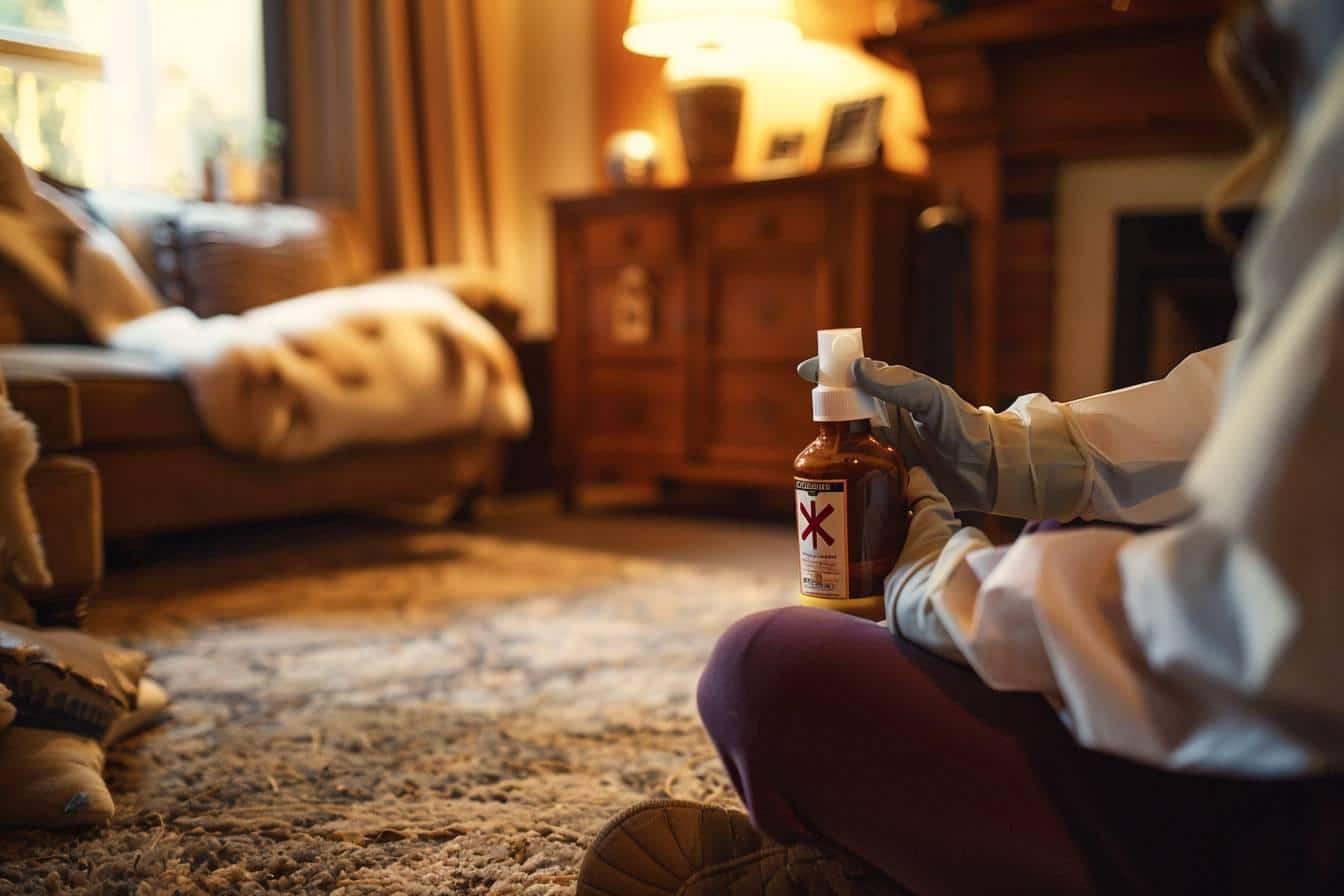Dealing with a flea infestation can be a frustrating and time-consuming experience for both homeowners and pet owners. These tiny, persistent pests can quickly multiply and cause discomfort for humans and animals alike. Fortunately, there are several effective methods to eliminate fleas from your home and pets. This article will explore various strategies to help you get rid of fleas and prevent future infestations.
Identifying and understanding flea infestations
Before diving into flea elimination methods, it’s crucial to understand these pests and recognize the signs of an infestation. Fleas are small, wingless insects that feed on the blood of mammals and birds. They’re known for their ability to jump long distances relative to their size, making them challenging to catch and eliminate.
Common signs of a flea infestation include :
- Pets scratching excessively
- Small, dark specks (flea dirt) in your pet’s fur
- Tiny, fast-moving insects on your pet or in your home
- Red, itchy bites on humans, typically around the ankles and legs
- Flea eggs or larvae in carpets, bedding, or upholstery
Understanding the flea life cycle is essential for effective control. Fleas go through four stages : egg, larva, pupa, and adult. Adult fleas lay eggs on their host, which then fall off into the environment. These eggs hatch into larvae, which eventually spin cocoons and become pupae. Finally, adult fleas emerge from the cocoons, ready to find a new host.
This complex life cycle makes it challenging to eradicate fleas completely, as different stages may be present in various parts of your home. Therefore, a comprehensive approach targeting all life stages is necessary for successful flea control.
Effective methods for eliminating fleas from pets
Your pets are often the primary hosts for fleas, so treating them is crucial in your flea elimination strategy. Here are some effective methods to remove fleas from your furry friends :
1. Flea combs : Using a fine-toothed flea comb is an excellent way to manually remove fleas from your pet’s fur. Comb through your pet’s coat, paying extra attention to areas like the neck, back, and base of the tail. Dip the comb in a mixture of warm water and dish soap to kill any fleas you capture.
2. Flea shampoos and baths : Bathing your pet with a specially formulated flea shampoo can help kill and remove fleas. Be sure to follow the instructions carefully, as some products may not be suitable for all pets or may require multiple applications.
3. Topical treatments : Spot-on treatments applied directly to your pet’s skin are highly effective in killing fleas and preventing reinfestation. Popular brands include Frontline, Advantage, and Seresto. These products typically last for several weeks to months.
4. Oral medications : Prescription flea control medications, such as Capstar or Comfortis, can quickly kill adult fleas on your pet. These treatments are often recommended by veterinarians for severe infestations or for pets with flea allergies.
| Treatment Method | Effectiveness | Duration | Suitable for |
|---|---|---|---|
| Flea combs | Moderate | Immediate | All pets |
| Flea shampoos | Good | Short-term | Most pets |
| Topical treatments | Excellent | 1-3 months | Cats and dogs |
| Oral medications | Very good | 1 month | Prescription only |
Remember to consult with your veterinarian before using any new flea control products on your pets, especially if they have pre-existing health conditions or are pregnant or nursing.

Eliminating fleas from your home environment
While treating your pets is essential, it’s equally important to eliminate fleas from your home to prevent reinfestation. Here are some effective methods to achieve a flea-free living space :
1. Thorough cleaning : Start by vacuuming all floors, carpets, and upholstered furniture. Pay extra attention to areas where your pets spend most of their time. Dispose of the vacuum bag or contents in a sealed plastic bag outside your home to prevent fleas from escaping.
2. Wash fabrics : Launder all bedding, pet bedding, and removable fabric covers in hot water. The heat will kill fleas, eggs, and larvae. For items that can’t be washed, consider using a steam cleaner to eliminate fleas.
3. Use flea sprays or foggers : There are various flea sprays and foggers available for home use. These products contain insecticides that kill adult fleas and prevent eggs from hatching. Be sure to follow the instructions carefully and keep pets and family members out of the treated areas for the recommended time.
4. Diatomaceous earth : This natural, non-toxic powder can be sprinkled on carpets, pet bedding, and other areas where fleas may hide. It works by dehydrating fleas and their larvae. Use food-grade diatomaceous earth and wear a mask when applying it to avoid inhaling the fine dust.
5. Professional pest control : For severe infestations or if DIY methods aren’t effective, consider hiring a professional pest control service. They have access to more potent treatments and can develop a comprehensive plan to eliminate fleas from your home.
Natural and preventive measures against fleas
While chemical treatments can be effective, many pet owners prefer natural flea control methods. Additionally, taking preventive measures can help avoid future infestations. Here are some natural and preventive strategies to consider :
1. Essential oils : Certain essential oils, such as cedarwood, lavender, and lemongrass, are known to repel fleas. Mix a few drops with water in a spray bottle and apply to your pet’s coat or around your home. Always dilute essential oils properly and avoid using them on cats, as some can be toxic to felines.
2. Nematodes : These microscopic worms are natural predators of flea larvae. You can purchase nematodes and apply them to your yard to control outdoor flea populations. This method is particularly effective in areas with moist soil.
3. Regular grooming : Brush your pets regularly and check for signs of fleas. This not only helps detect infestations early but also removes flea dirt and distributes natural oils throughout your pet’s coat, making it less hospitable for fleas.
4. Maintain your yard : Keep your lawn mowed and remove debris where fleas might hide. Consider using cedar chips in outdoor areas frequented by your pets, as cedar is a natural flea repellent.
5. Flea-repelling plants : Certain plants, such as chrysanthemums, lavender, and mint, are known to repel fleas. Plant these around your home or in areas where your pets spend time outdoors.
By combining these natural and preventive measures with regular cleaning and pet treatments, you can create an environment that’s inhospitable to fleas and reduce the likelihood of future infestations.
Remember, persistence is key when dealing with fleas. It may take several weeks of consistent treatment to fully eliminate an infestation, as you need to break the flea life cycle at all stages. Stay vigilant, continue your chosen treatments, and consult with your veterinarian if you’re having difficulty controlling the problem. With patience and the right approach, you can successfully rid your home and pets of these pesky parasites and enjoy a flea-free environment.

